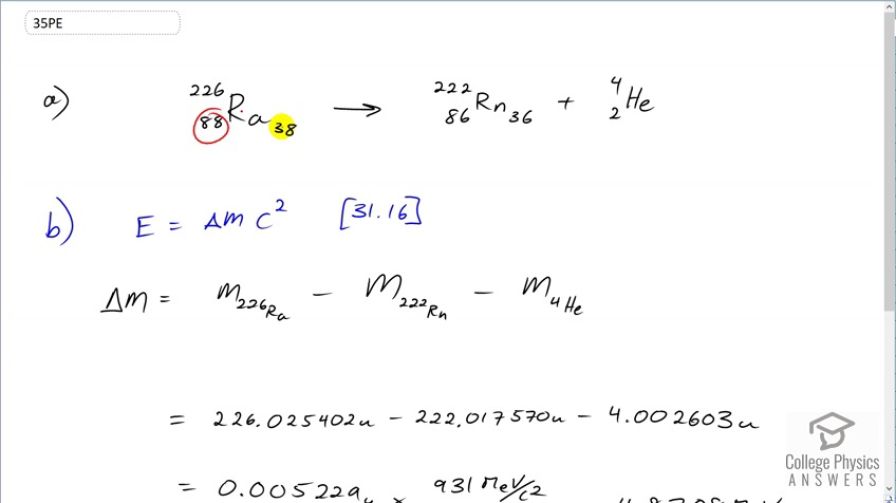Question
(a) Write the complete decay equation for . (b) Find the energy released in the decay.
Final Answer
- Please see the solution video
Solution video
OpenStax College Physics for AP® Courses, Chapter 31, Problem 35 (Problems & Exercises)

vote with a rating of
votes with an average rating of
.
Calculator Screenshots
Video Transcript
This is College Physics Answers with Shaun Dychko. The α-decay of radium results in radon 2 protons and 2 neutrons bind together to make this α-particle which has a total of 4 nucleons 2 of which are protons and 2 of which are neutrons. And so this radon has 2 fewer neutrons so 36 instead of 38 and 2 fewer protons 86 instead of 88 and as a result of that 4 fewer total nucleons. OK. Now part (b) asks us to find the amount of energy released in this decay. So the energy released is the change in mass times c squared; that's equation 16 from chapter 31 and the change in mass will be the mass of the radium atom minus the mass of the radon atom minus the mass of the helium atom. Now we are using atomic masses here which include electron masses but it doesn't matter because there are 226 electrons that we are including in this mass that we don't want and there are 222 plus 4 which is also 226 electrons that we are taking away within these masses. And so these we are adding 226 electrons and then taking away 226 electrons masses and so the electron masses cancel. That's why we can use these atomic masses when we are really wanting to know masses of these nuclides. OK. So here's the atomic mass of radium minus the atomic mass of radon—222— and minus the atomic mass of helium and we get that difference and multiply by 931 megaelectron volts per c squared for every atomic mass unit giving us this many this is the mass in units of megaelectron volts per c squared and then we multiply that by c squared and we get 4.87 megaelectron volts is the energy released during this α-decay of radium.
